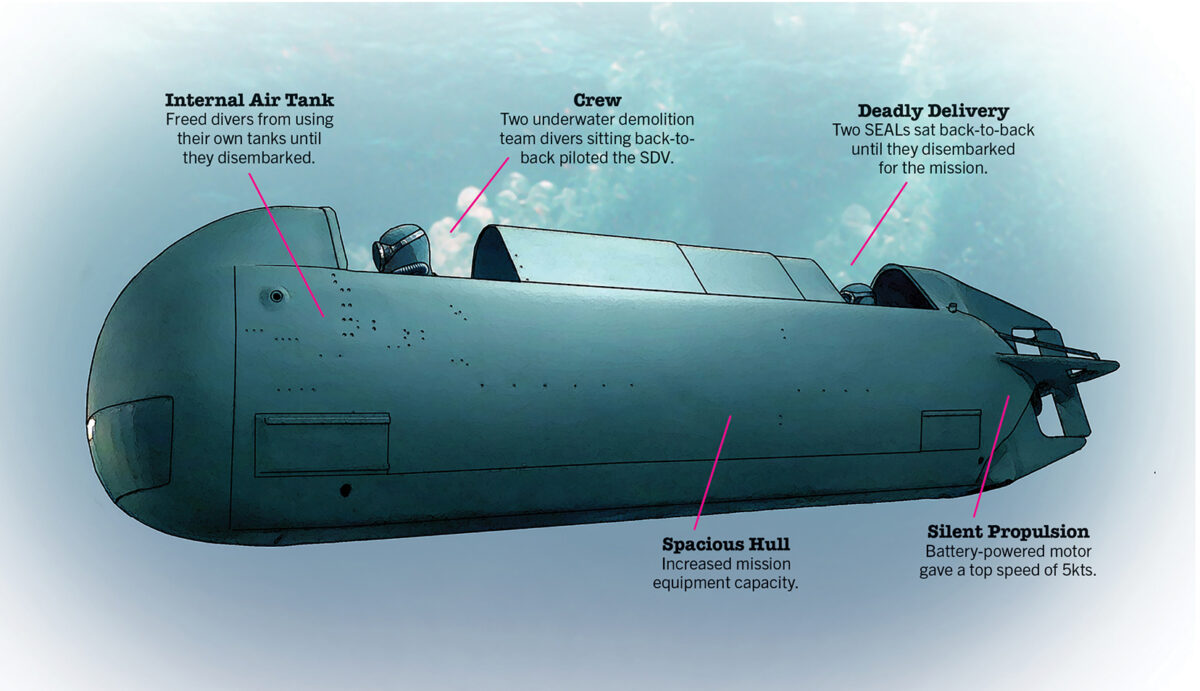Shortly after 2:00 a.m. local time on June 4, 1972, just a few miles off the North Vietnamese coast, U.S. Navy Lt. Melvin S. Dry and three naval special warfare personnel departed the USS Grayback (LPSS-574) aboard a Mark VII Swimmer Delivery Vehicle (SDV). Dry intended to reconnoiter the beach area where his team was to rendezvous with a group of escaped American prisoners-of-war (POWs). But a combination of stronger than expected offshore currents and the Mark VII’s limited battery capacity forced him to abandon the mission 1,000 feet from shore. A Navy helicopter ultimately sunk the SDV with miniguns to prevent it falling into enemy hands [see our story on p. 20], before delivering Dry and the rest of the operations team to USS Long Beach (CGN-9), the command ship for Operation Thunderhead, America’s last POW rescue attempt of the Vietnam War. The Mark VII SDV lacked the power and endurance to overcome the currents and sea condition. Operation Thunderhead was aborted.
The U.S. Navy’s first production model Swimmer Delivery Vehicle, the Mark VII derived from a post-World War II review of Underwater Demolition Team (UDT) operations. The study called for a covert underwater delivery means for UDTs when water conditions, depth, and distance made it unwise or impractical for the teams to reach the target by swimming directly from a submarine. UDT made do with the Italian-developed World II-era Mark 6 Sea Horse until 1967, when the U.S. Naval Coastal Systems Center modified the General Dynamics Convair 14 midget submarine.
The resulting Mark VII Mod 0 was a free-flooding design with a reinforced fiberglass hull. Nonferrous metals and sound dampening insulation were used throughout to minimize the SDV’s magnetic and acoustic signatures, respectively. A gyroscope constituted its only navigation aid. It had a single rudder and propeller, the latter driven by a small electric motor powered by a single bay of silver-zinc batteries. It had a 40nm range under ideal conditions but considerably less against powerful currents and seas.
The Mark VII underwent several improvements after 1972. The Mod 6 variant of 1975 featured a larger hull, greater payload capacity, and a high frequency sonar for precision navigation underwater. It also incorporated an emergency surfacing capability. Still, it remained underpowered and in 1983 gave way to the Mark VIII SEAL Delivery Vehicle that remained in service until 2023.
Mark VII Mod 2 SDV
Crew: 4 UDT & SEALs
Length: 5.7m/17ft 8 inches
Beam: 1.6m/5ft 6 inches
Surface Displacement: 2,200lbs
Propulsion: Electric Motor Driving 1x Propeller
Max Speed: 5kts
Max Range: 40nm
Operating Depth: 50–60ft
This story appeared in the 2024 Winter issue of Vietnam magazine.
historynet magazines
Our 9 best-selling history titles feature in-depth storytelling and iconic imagery to engage and inform on the people, the wars, and the events that shaped America and the world.






